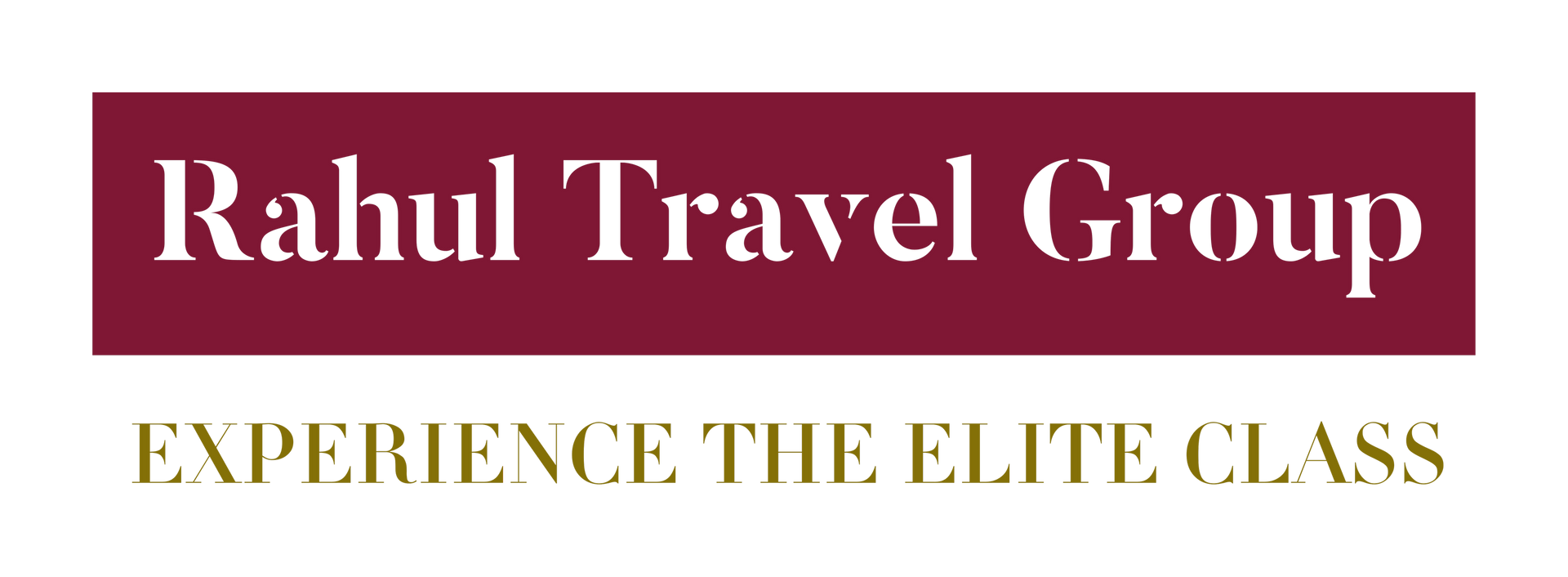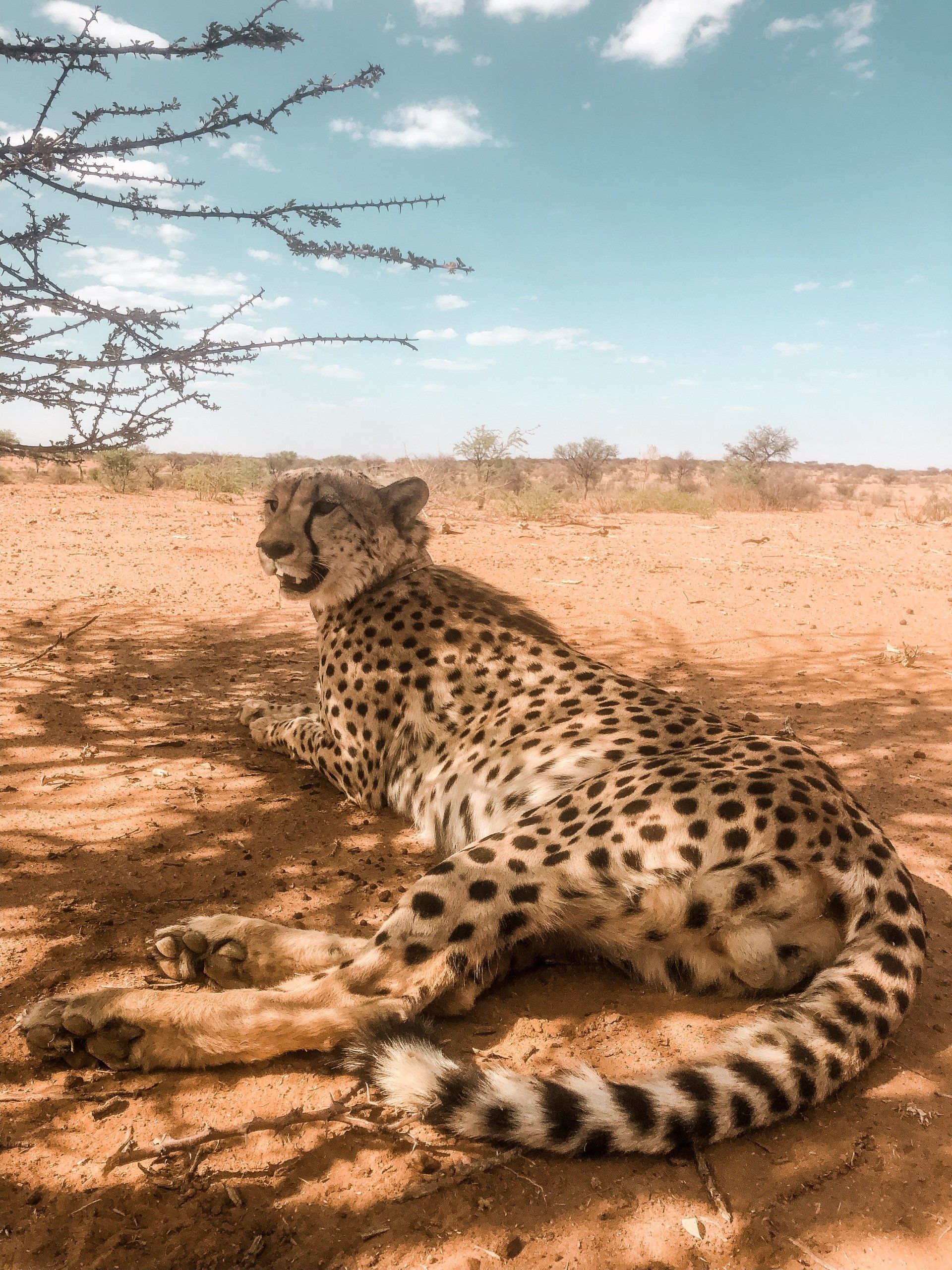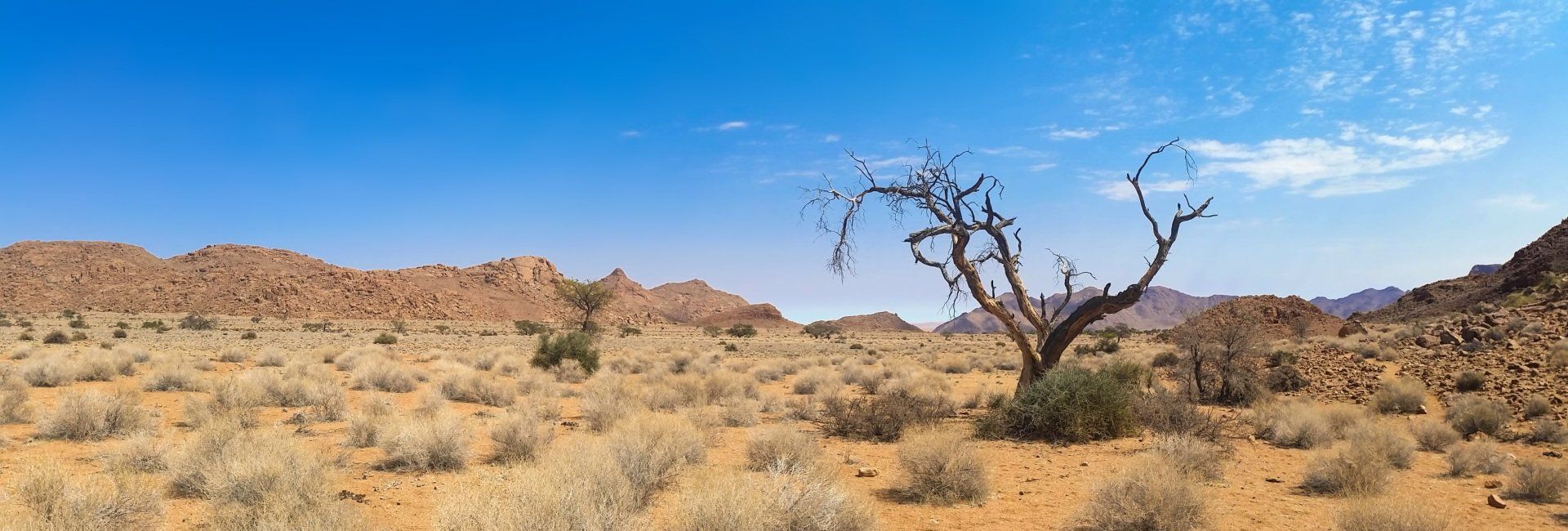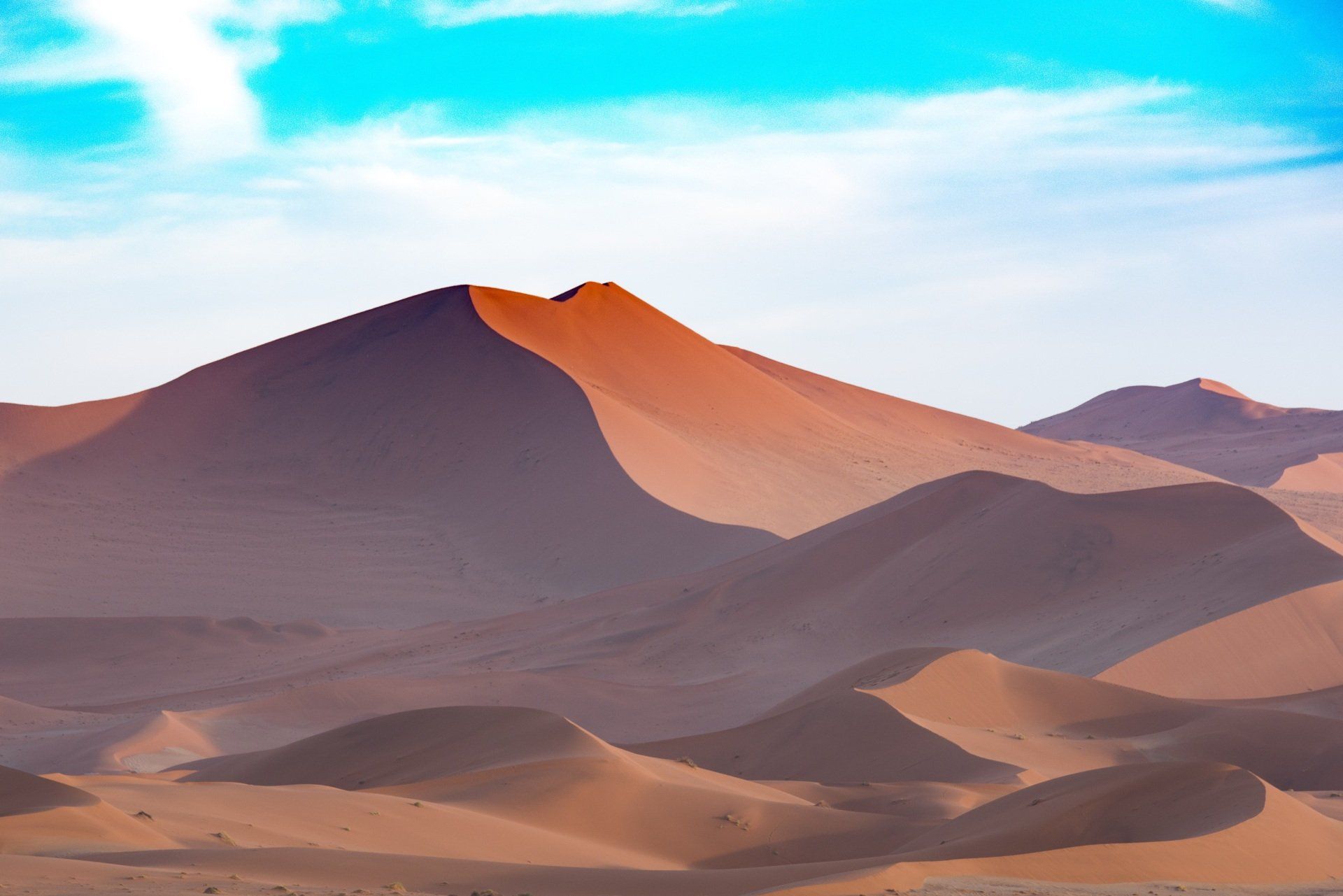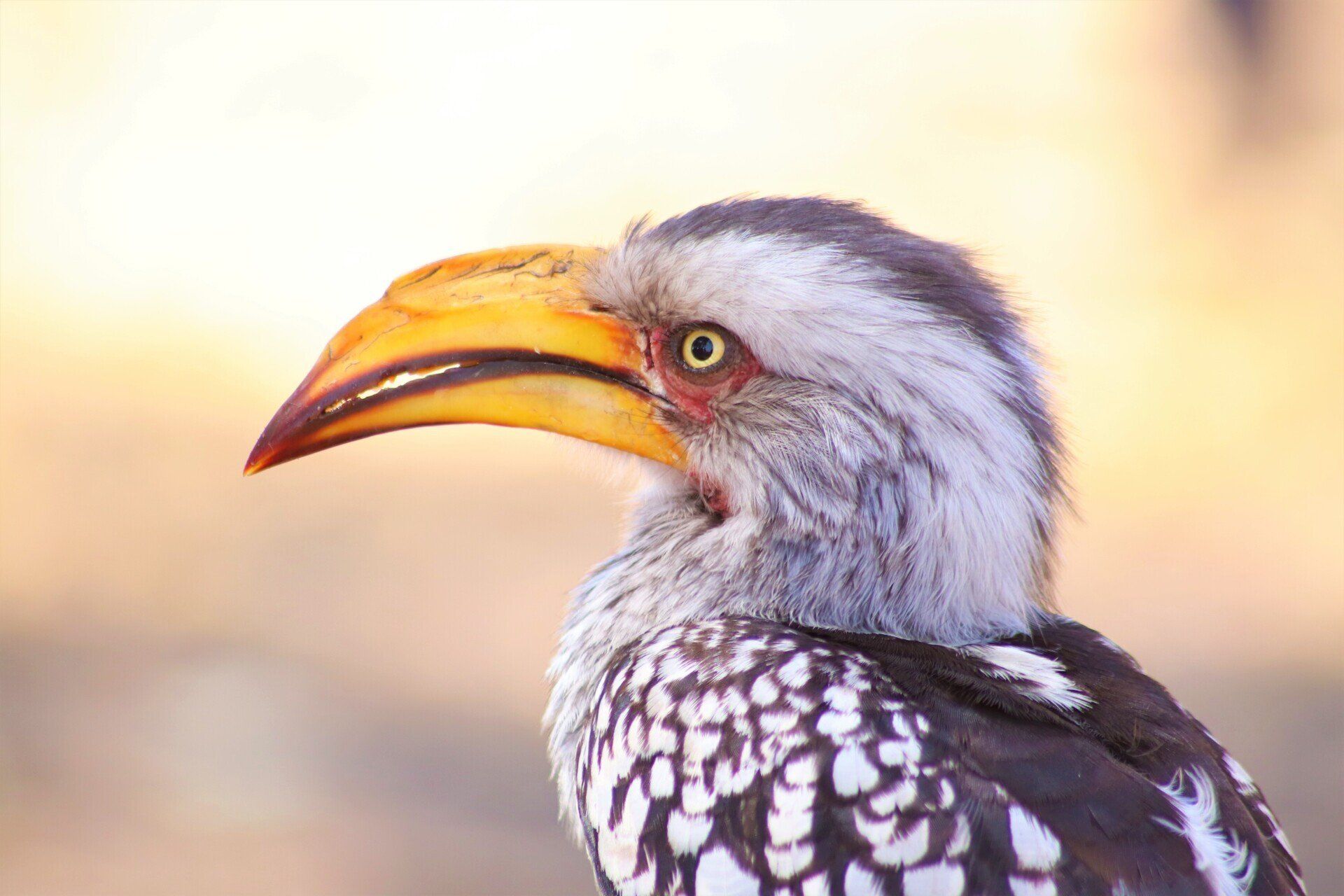Welcome in Namibia
Weather and climate
Namibia has a dry climate with hot days and cool nights. The coastal areas, such as Swakopmund, experience a cool sea breeze, while the interior regions, including Etosha National Park, can get extremely hot. Rainfall is minimal, with the majority occurring between November and April.
Accommodations
Popular accommodations in Namibia include lodges, campsites, and guesthouses. Some popular locations include Sossusvlei in the Namib Desert, Etosha National Park, and the coastal town of Swakopmund. Luxury lodges and tented camps offer unique experiences, while campsites provide a more budget-friendly option for travelers.
Travel advice and safety
Namibia is relatively safe for travelers, but it's essential to take precautions, especially in remote areas. Stay hydrated, carry sufficient water and supplies when traveling long distances, and be mindful of wildlife when driving, particularly in national parks. It's also advisable to check weather conditions and road conditions before embarking on a journey.
Activities and attractions
Key attractions in Namibia include exploring the towering sand dunes of Sossusvlei, wildlife viewing in Etosha National Park, visiting the coastal town of Swakopmund for adventure activities like sandboarding and quad biking, and experiencing traditional culture by visiting Himba villages or attending a San Bushmen cultural tour.
Local cuisine and restaurants
Namibian cuisine is influenced by various cultures, with popular dishes including biltong (dried meat), potjiekos (a slow-cooked stew), and kapana (grilled meat). Recommended eateries include Joe's Beerhouse in Windhoek for its vibrant atmosphere and hearty meals, and The Tug Restaurant in Swakopmund for fresh seafood.
Transport
In Namibia, self-driving is a common and convenient option for travelers. Rental car prices vary depending on the vehicle type and rental company but start at around $30-50 USD per day. Taxis are available in urban areas, with fares starting at around $5-10 USD for short trips. Public transport options include buses and shared minibusses (combis), with fares ranging from $1-5 USD depending on the distance.
Currency and payment
The currency used in Namibia is the Namibian Dollar (NAD), which is pegged 1:1 with the South African Rand (ZAR). Both currencies are widely accepted, but it's advisable to carry cash for purchases in rural areas and smaller establishments. Credit cards are accepted in hotels, restaurants, and larger stores.
Language and communication
English is the official language of Namibia and is widely spoken and understood, especially in urban areas and tourist destinations. Other languages spoken include Afrikaans, German, and various indigenous languages such as Oshiwambo and Herero.
Culture and local customs
Namibian culture is diverse, with various ethnic groups each contributing to the country's rich heritage. Respect for elders is important, and it's customary to greet people with a handshake. When visiting rural communities, it's polite to ask for permission before taking photographs, and it's respectful to adhere to local customs and traditions.
Packing list
When traveling to Namibia, pack lightweight clothing suitable for hot days and cooler evenings, sturdy walking shoes for hiking and exploring, sun protection such as hats and sunscreen, a refillable water bottle, and a camera for capturing the stunning landscapes.
Budgeting
The average daily budget for a mid-range traveler in Namibia ranges from $50 to $150 USD, covering accommodation, meals, transportation, and activities. Luxury travelers can expect to spend upwards of $200 USD per day, while budget travelers can find cheaper options, especially when camping or staying in guesthouses.
Health and medical facilities
Medical facilities in Namibia are generally good in urban areas but may be limited in rural areas. Windhoek Central Hospital and the Roman Catholic Hospital in Windhoek are reputable medical facilities. It's advisable to have travel insurance that covers medical emergencies, including medical evacuation if necessary.
Travel tips and recommendations
When visiting Namibia, be sure to plan your itinerary well in advance, especially if traveling during peak tourist seasons. Respect wildlife and adhere to park regulations when visiting national parks. Consider joining guided tours for activities like wildlife safaris and cultural experiences to enhance your understanding of Namibia's landscapes and cultures.
Emergency contacts
In case of emergencies, dial 10111 for police assistance and 0031683676576 for medical emergencies in Namibia.
Internet and communication
Major mobile network providers in Namibia include MTC and Telecom Namibia, offering prepaid SIM cards and mobile data plans for tourists. WiFi is available in most hotels, lodges, and cafes in urban areas and tourist destinations.
Submit your travel inquiry here
Thank you for contacting us.
We will get back to you as soon as possible.
We will get back to you as soon as possible.
Oops, there was an error sending your message.
Please try again later.
Please try again later.
